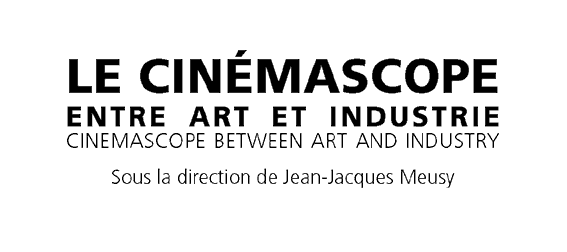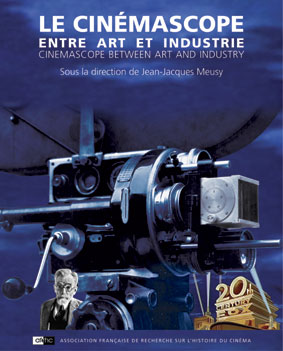

On constate en effet, depuis quelques années, un regain d’intérêt des producteurs et des réalisateurs pour les tournages avec des optiques anamorphiques, peut-être sous l’influence du 16/9 télévisuel. Il n’est pas jusqu’à certains tournages en technologie numérique qui n’aient recours à l’anamorphose.
Cette réflexion sur le CinémaScope, engagée ici par une pléiade d’auteurs français et étrangers, permet aussi d’éclairer les interrogations fondamentales soulevées par le cinéma en général, notamment concernant les rapports du spectateur à l’image.
Three-quarters of a century after astronomer Henri Chrétien’s invention of the of the CinemaScope centerpiece, the Hypergonar, and one-half of a century after the process was launched by 20th Century Fox, it is interesting to examine the fascinating adventure of this innovation, and its influence on the evolution of cinema. In the year 2000, Eric Rohmer, recalling the enthusiasm he felt, at a time when he was still called Maurice Schérer, incites us to revisit this page in film history, which is yet unturned. In recent years, we have seen a renewed interest amongst producers and directors in shoots using the anamorphic lens, perhaps due to the influence of wide-screen television. There are very few shoots using digital technology that do not have recourse to anamorphosis.
This reflection on CinemaScope, engaged here by a host of French and international authors, also sheds light upon fundamental issues raised by the cinema in general, notably concerning the spectator’s relationship to the image.
Ouvrage publié sous la direction de Jean-Jacques MEUSY, directeur de recherche au CNRS, avec le soutien du CNC et de la Fondation EDF. Textes en français ou en anglais, résumés bilingues et index général. / Edited by Jean-Jacques MEUSY, Research Director at the CNRS, and supported by grants of the CNC and the Fondation EDF. Texts in French or English, bilingual abstracts and general index.
Format 21 x 26 cm
368 pages, très nombreuses reproductions noir et blanc et couleur
ISBN 2 913758 83 4
35 €